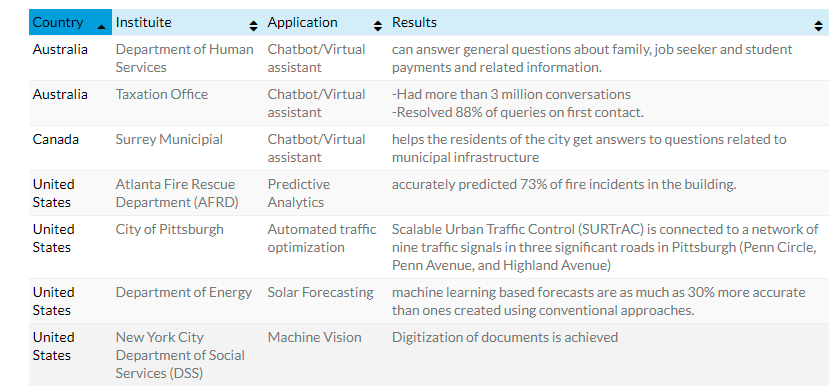Artificial Intelligence has the potential to improve governance in terms of accountability, citizen engagement and interoperability.
Register for Free Hands-on Workshop: oneAPI AI Analytics Toolkit
The Indian government has been cottoning on to the benefits of AI since the turn of the last decade. In 2020, the Centre increased the outlay for Digital India to $477 million to boost AI, IoT, big data, cybersecurity, machine learning and robotics.
In the 2019 Union Budget speech, Finance Minister Nirmala Sitharaman said the government would offer industry-relevant skill training for 10 million youth in India in AI, Big Data and robotics. However, there is still a lot of scope for not only the Indian government.
“While there is considerable enthusiasm and desire by the government to develop AI-driven solutions in governance, including the release of two reports identifying the broad contours of India’s AI strategy, this enthusiasm is yet to be underscored by adequate financial, infrastructural, and technological capacity,” according to a report by The Centre For Internet And Society.
AI use cases in governance:
Social welfare schemes
The biggest challenge with public welfare schemes is reaching the right people at the right time. In countries with a huge population like India, this becomes even more challenging. AI-powered systems can, however, increase the reach of such programs. For instance, in the government mid-day meal scheme, machine learning and supply chain management could predict the inventory and process automation technology can ensure food reaches the beneficiaries on time.
Healthcare
The pandemic spotlighted the potential of AI in healthcare. AI can make public healthcare affordable and accessible via virtual assistance, research analytics, diagnostics, medical imaging analysis, mental health, assisted surgery, fraud detection, cybersecurity, among others.
“AI can make medical care more human. Sometimes people believe AI replaces everything. I believe AI will in fact enable some of these clinical experts to find more time to spend with patients,” said Mitali Dutta, head of data science and predictive analysis, group IT information and data management, Philips Innovation Campus, at her session at The Rising 2021 by Analytics India Magazine.

Examples of use cases of AI in different countries (Credit: AI Multiple)
Predictive policing and surveillance
Though the effectiveness and fairness of AI in predictive policing are still suspect, it has its upside if used judiciously. For instance, Palantir’s law enforcement solution can conduct geo-searches around locations of interest and forecast where and when the next crimes may occur.
AI surveillance, where ML algorithms analyse images, videos, and data recorded on CCTVs, can help governments identify criminals. However, the ethical side of AI-powered surveillance is mired in racial profiling and human right violation cases. In fact, IBM has stopped developing or offering facial recognition technology for mass surveillance after massive backlash.
Documentation
This is the simplest way to adopt AI. This includes extraction and inputting of invoices, certificates, legal documents, and letters. Generating automated content with NLG can save a lot of time for the government employees, who can then focus on more important taska. AI makes it easy for translation of government records into multiple languages. For example, Korea used AI-based real-time translation services in the 2018 PyeongChang Winter Olympics.
Military intelligence
Many countries have special departments or agencies that plan, initiate, and integrate AI capabilities into the military arsenal and develop new capabilities. The National Science and Technology Council in the US, the Strategic Council for AI Technologies in Japan, and the AI Council in the UK are a few examples. One common use of AI in the military is autonomous military drones, called Unmanned combat aerial vehicles (UCAV). For instance, Azerbaijan used drones against Armenia at Nagorno-Karabakh.
Predicting natural calamities
AI-powered systems can map the dryness of forests, predict wildfires, analyse the magnitude and patterns of earthquakes, record rainfall and flood simulations to predict flooding, use seismic data to predict volcanic eruptions and use satellite images to predict hurricanes. AI can help us in disaster preparedness and avert disasters force majeures can leave in its wake.
Other use cases:
- Using chatbots to schedule meetings, directing requests to the right department, hiring assistance and answering FAQs
- Using data analytics to analyse relevant social media posts for feedbacks from citizens on the effectiveness of the services.
- Prioritising emergency calls using voice recognition technologies & ML algorithms.
- Offering personalised education in government schools
- To identify social media posts regarding accident prone roads and take immediate action. Incident detection can also happen using NLP techniques.
#wpdevar_comment_1 span,#wpdevar_comment_1 iframe{width:100% !important;} #wpdevar_comment_1 iframe{max-height: 100% !important;}
Join Our Telegram Group. Be part of an engaging online community. Join Here.
Subscribe to our Newsletter
Get the latest updates and relevant offers by sharing your email.

